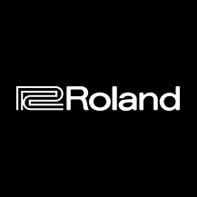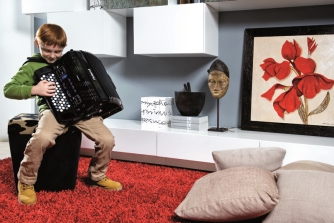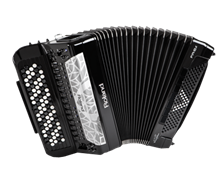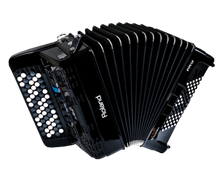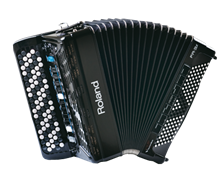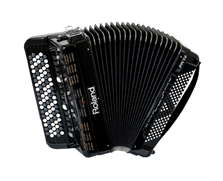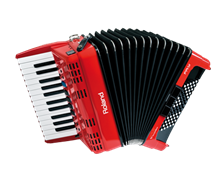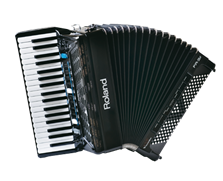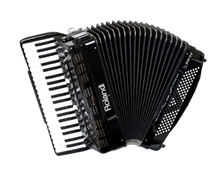Roland is an international corporation, established in Osaka, Japan, in 1972. Today Roland is the world’s second largest musical instruments manufacturer, giving way only to Yamaha.
The headquarters is located in Hamamatsu in Shizuoka Prefecture, Japan. However, apart from Japan, the company has many factories in Italy, the USA, Taiwan, and China.
It was the Italian branch that suggested the idea of digital accordion manufacturing. This idea had never been popular with other digital musical instrument manufacturers. However, Roland took up the plunge and worked out the first digital accordion, V-Accordion, in 2004.
The V-Accordion bears an outer resemblance to conventional acoustic bayans and accordions, only they do not have any reeds. Sound is generated by electronics. Of course, this instrument is not meant to substitute acoustic bayans and accordions. It allows a diligent musician to experiment with utterly new timbres and tones. Firstly, different bayans' and accordions' registers can be combined, that is, you can use some of the Scandalli registers together with Pigini and Dallape registers; you can play the selected combination with bandonion sounding or with a Scottish accordion's wide range.
Secondly, the digital orchestration features non-accordion sounds, such as those of the upright piano, harpsichord, string instruments, saxophone, bass guitar, and even…. drums! Thus, accordionists get a vast arsenal of timbres and tones. The artist is free to choose proper means of creating a musical image. After all, it’s all about your mastery, skill, taste, technique, and intuition.
Today three digital accordion models distinguished by diapason and other options are available: FR-1x, FR-3x, FR-8x. Every model has a bayan (button keyboard accordion) and a piano keyboard accordion version. Besides, the company manufactures a diatonic accordion, the FR-18 Diatonic model.
Roland digital accordions
